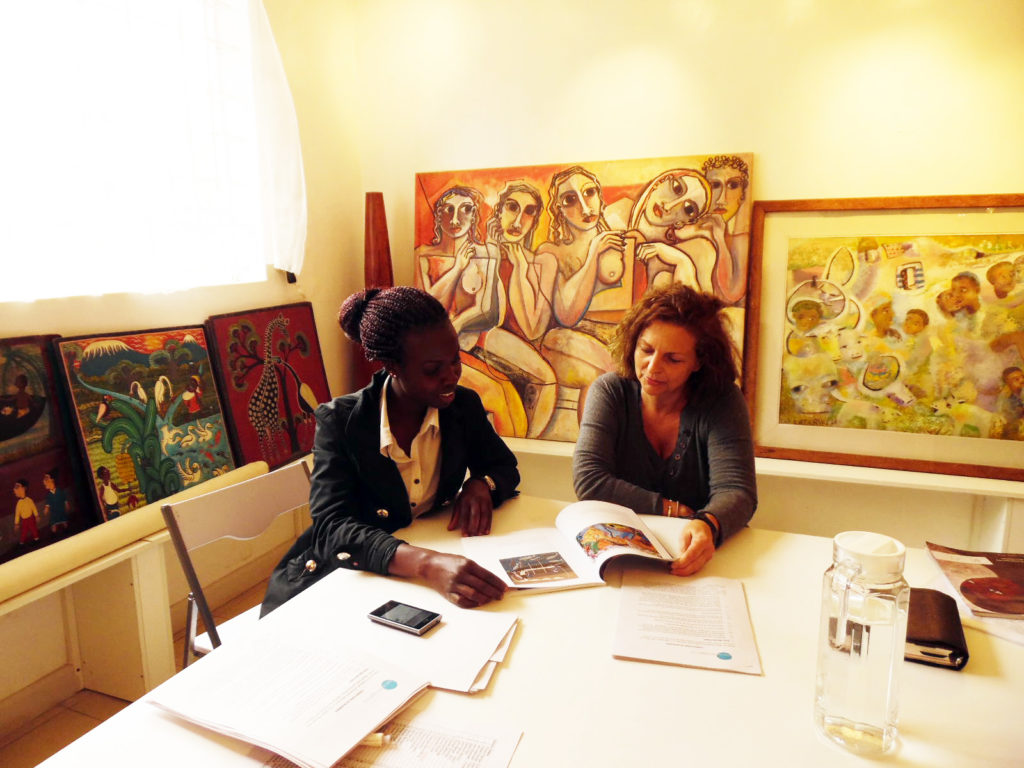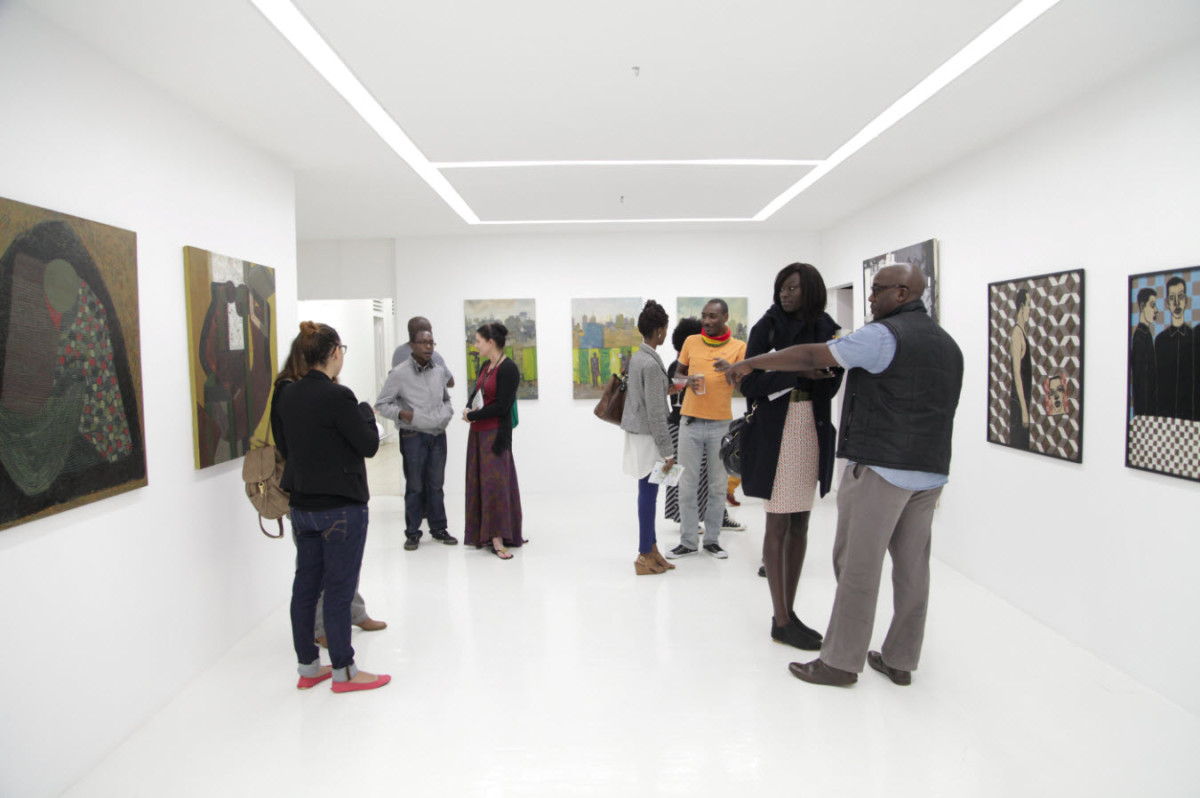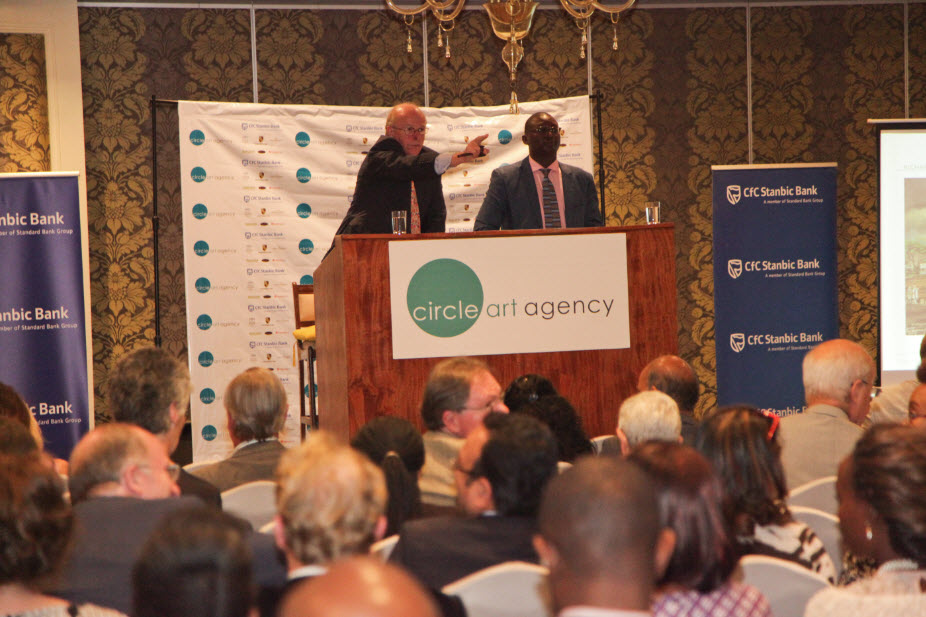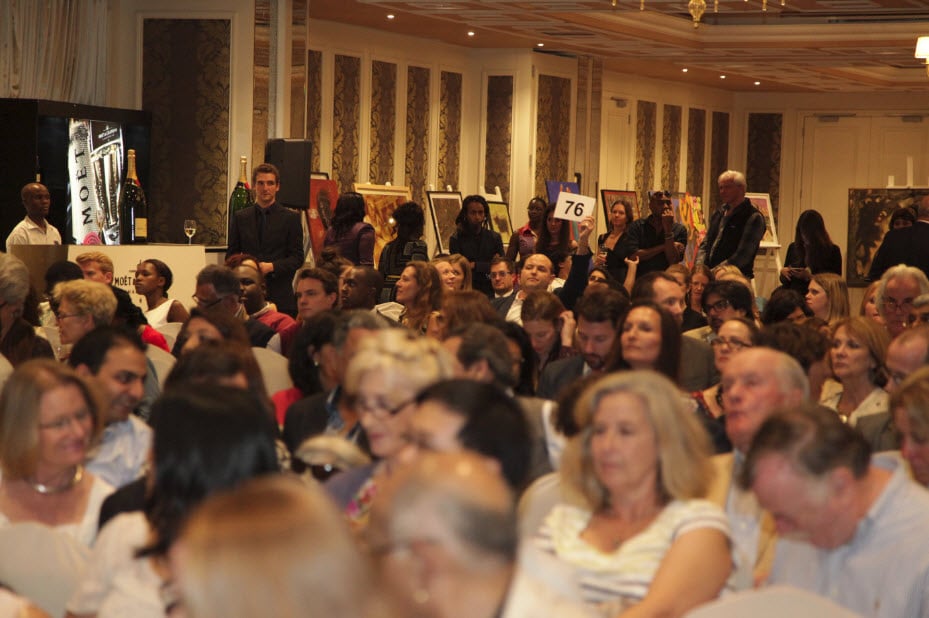Auctions
artnet Asks: Danda Jaroljmek on Collecting Contemporary and Modern African Art
And what it's like running East Africa's only fine arts auction.

And what it's like running East Africa's only fine arts auction.

Artnet News

Danda Jaroljmek wears many hats. She is not only an artist herself, but also an art consultant and, more recently, an auctions director and curator. Living in Kenya since 1997, she and two co-founders started the Circle Art Agency in 2012 to focus on building local and international markets for East African artists. Today, Circle has grown into a thriving institution, offering annual auctions that attract bidders from all over the world.
This year’s auction will be held on November 3, 2015, and features contemporary and modern African artists such as Dawit Abebe, Peterson Kamwathi, Jak Katarikawe, and many others. Here, Jaroljmek explains the history of the Circle Art Agency, and why collectors should take notice of the developing East African art scene.
Tell us about Circle Art Agency, and what makes it unique.
We aren’t an auction house, which I know confuses people outside Africa. We are an agency that runs an annual contemporary and modern East African art auction, as well as operating a gallery and acting as arts advisors. As there is so little infrastructure for art here, we are trying to fill some of the gaps and give artists and art collectors alternative platforms for exposure and collecting.
How developed is the auctions market in Africa in general, and in Kenya in particular?
South Africa is very well represented with Bonhams and Christies, as well as Strauss & Co, a South African auction house. Annie Palmer from there came to our first auction in Nairobi and was very helpful, as did Giles Peppiatt from Bonhams from the United Kingdom. ArtHouse Contemporary, run by Kavita Cheleram in Lagos, has been operating for around five years and has made a huge impact in Nigeria.
Circle Art Agency is the only organization hosting an auction in East Africa, and we have had quite a lot of success. Kenyan art collectors have been really responsive, and it has become the most important annual visual art event in Nairobi.

Circle Art Gallery. Courtesy of Circle Art Agency.
What has been the highlight of your career so far? What has surprised you the most?
I guess two things: the huge success of the first Circle Art Agency auction in 2013—which we interpreted as the market being ready for it—and secondly, the joy of opening our beautiful little “white cube” gallery, which fuels my interest in curating along with the positive response we have had to the exhibitions so far.
What is the highest-selling lot you’ve ever sold?
At auction it was 1.8 million Kenyan shillings (around 18,000 USD) for a Geoffrey Mukasa painting: he was a Ugandan artist working between1980–2000. We also had a private sale of 2 million Kenyan shillings for Mau Mau detention camp, a sculpture dated 1969 by the 94-year-old Kenyan artist Edward Njenga. This is small-scale compared with the rest of the world, but pretty big stuff for us!
Is collecting in Africa geared mostly towards passion, or investment? Who are the most influential African collectors?
Almost entirely passion, though we now have statistics for our collectors on the investment potential of some of the artists we work with. This is very new, and we try to inspire passion first, but can also offer advice on which artists are collectable in East Africa and are receiving interest locally and internationally. Many of our collectors are quite private, but some of our big collectors are Tony Wainaina and Samit and Taran Gehlot.
How do you select most of your consignments? Are you reaching out to clients? Or are they coming to you?
In the beginning it was daunting to find secondary market quality art, so we do also sell directly from the artists, which I know is quite strange in the auction world. Now I am contacted by art collectors from all over the world—South Africa, Australia, Bangkok, USA, UK, and the Netherlands so far in the last three years—as we have had great press coverage and people are managing to find us.

Circle Auction 2014, with auctioneers Dendy Easton and Chilson Wamoja. Courtesy of Circle Art Agency.
When is your next important sale? Why should people come?
The third Circle Modern and Contemporary East African art auction is on November 3 at the Villa Rosa Kempinski Hotel, Nairobi. We have 51 Lots from six countries, both modern and contemporary, primary and secondary market. Many of the lots are rare, and it would be impossible for collectors to find this sort of art—from the 1970s in particular—by themselves. This year we are representing the Emerson Foundation, set up by the late Zanzibari hotelier, Emerson Skeens. We have seven very rare works from the late George Lilanga and Edward Tingatinga and family dating from 1970–80. These works are of interest internationally, and authenticated pieces from these artists are not easy to come by.
The art market is ever more global, and bids are increasingly coming from all corners of the world. Do you see the same happening in Africa?
Absolutely, we have bidders flying in from the UK and the United Arab Emirates and an increasing number of telephone bidders. Not to the same extent as South and West Africa, but we are working hard to raise awareness of the art scene here and encourage more international interest.
You also run a gallery, tell us about your curating philosophy and the artists you represent.
During the first two years of Circle, we did a series of very successful pop-up exhibitions all over Nairobi in interesting locations, but we soon realized that it wasn’t sustainable. Each show took months to set up, so we couldn’t have enough exhibitions. We opened the gallery this year and have had six really well-received exhibitions. We don’t officially represent artists—the market is still too small here and I like to work with a large group of artists for different ideas—but we have loose arrangements with a smaller group of artists that we work with regularly. I am an artist, not a curator, so it has been an exciting and massive learning curve. The most stimulating exhibitions for me have been the group shows with a concept. I realize it fulfills my artistic impulse, almost as if the exhibition is a piece of art that I have made. I like to focus on an unexpected group of artists, mixing emerging and established, and pushing something unusual.
Our launch exhibition was “Concerning the Internal,” showing the work of 15 artists, most of whom happened to be women, which is still unusual here. I was very proud of that show. I try to think equally of our audience; it is important to stimulate and educate them, as many of our collectors are quite new to contemporary art and they trust us to guide them. They are very involved with Circle, and we regularly have 300 people at our private viewings.

The 2014 Circle Auction. Courtesy of Circle Art Agency.
Do you collect art yourself? Tell us about your collection.
I do, I move house a lot and live modestly so don’t have a lot of space, so I started collecting works on paper. I now have a rather lovely collection of small works by my favorite Kenyan artists.
What advice would you give to our readers who want to learn more about African artists?
Visit all the art fairs and galleries focusing on African art, subscribe to Contemporary And and Art Africa and other online art magazines—and of course artnet News—and make sure when you travel for business or on holiday to do your research and visit us and the other art spaces in Nairobi, and not just go on safari!